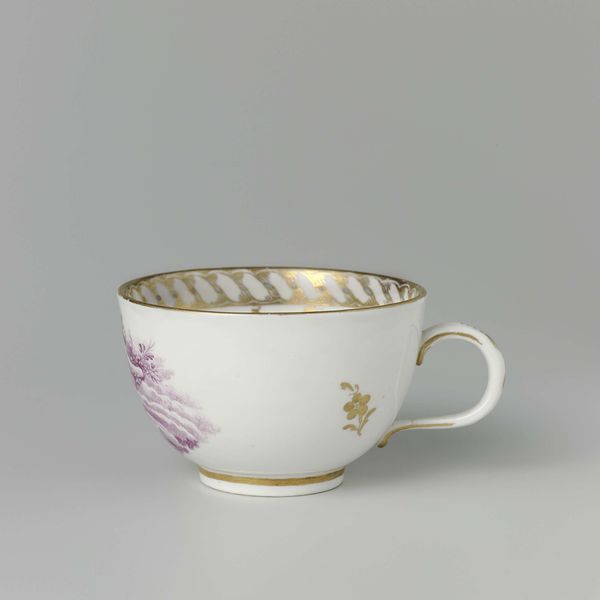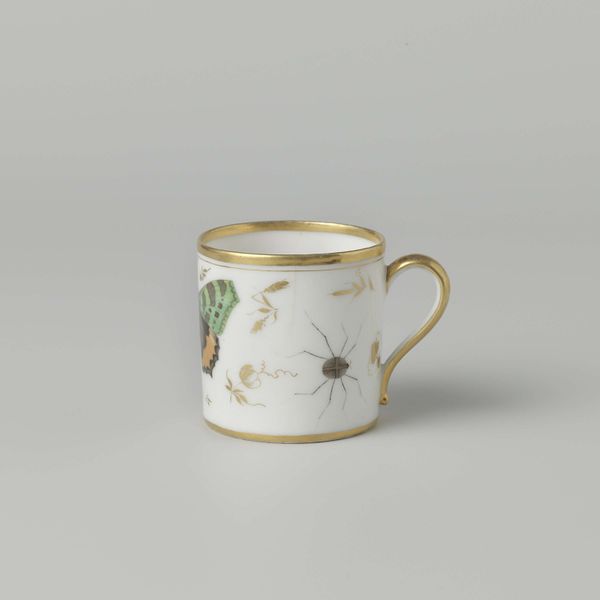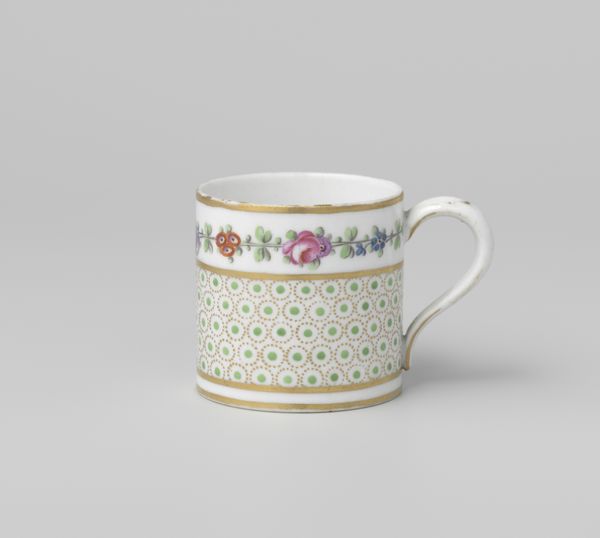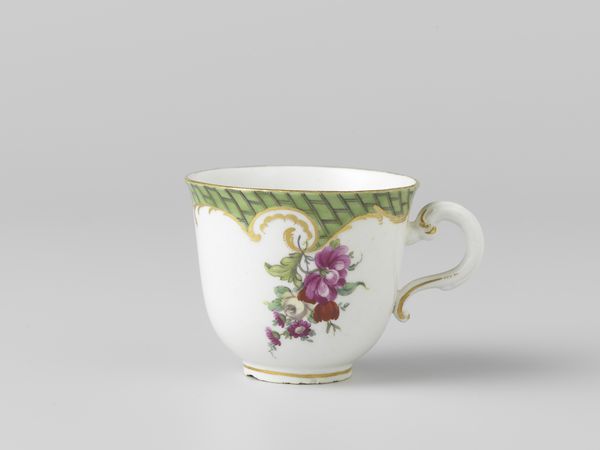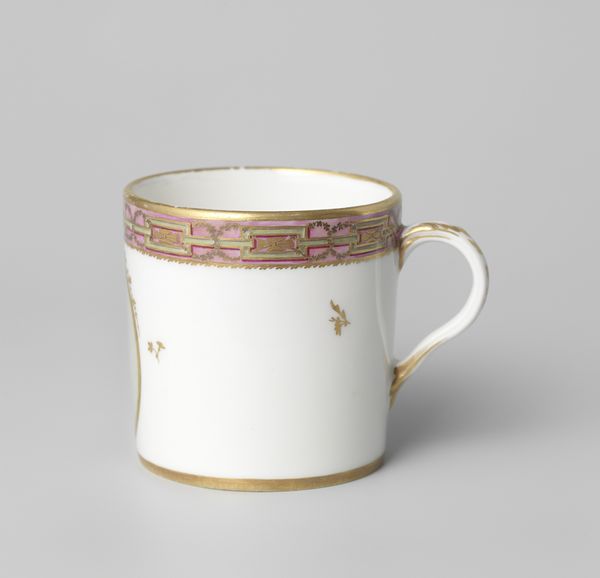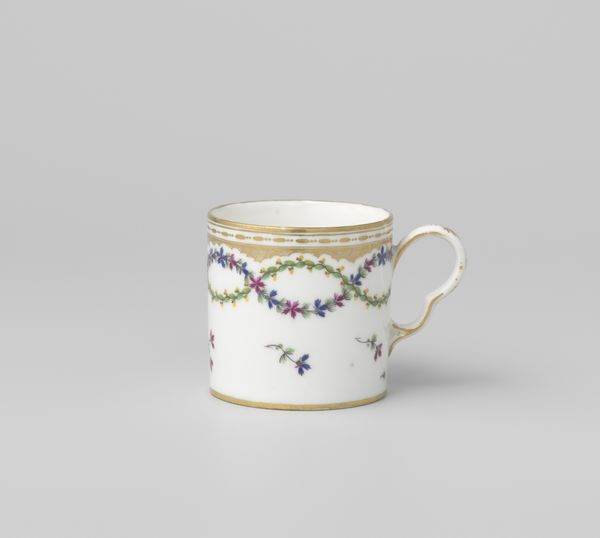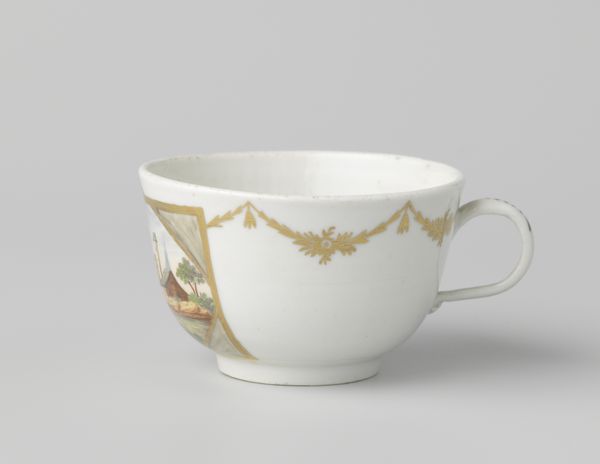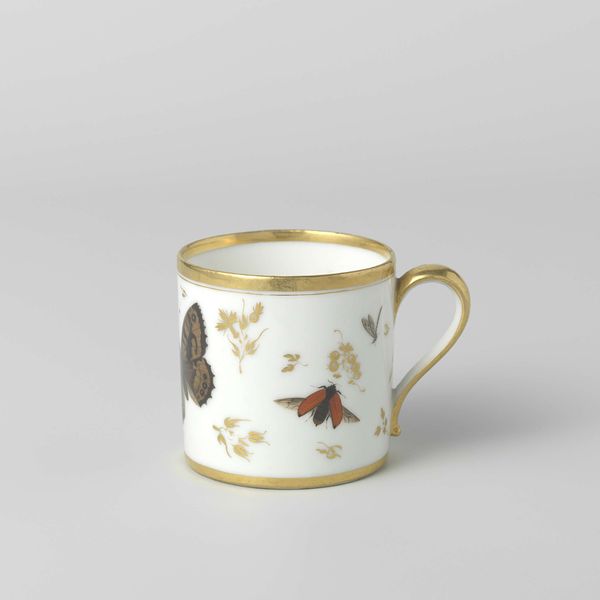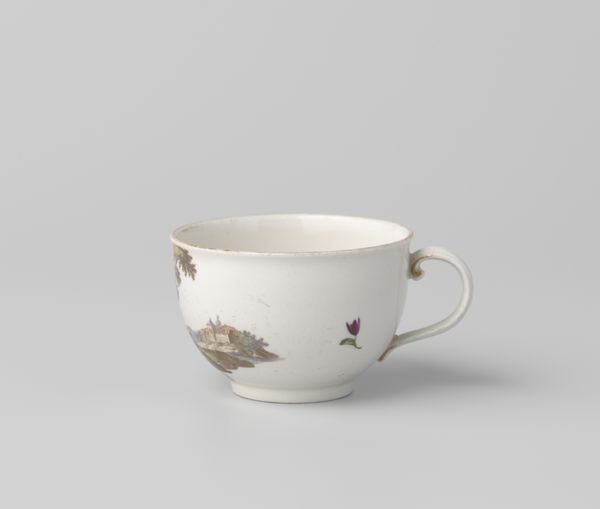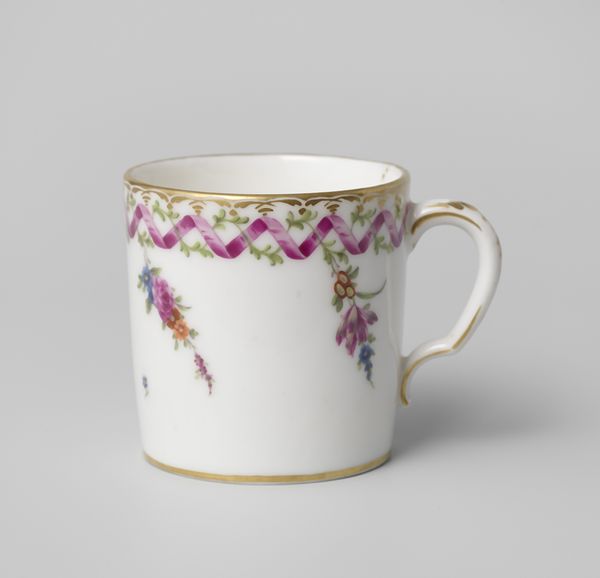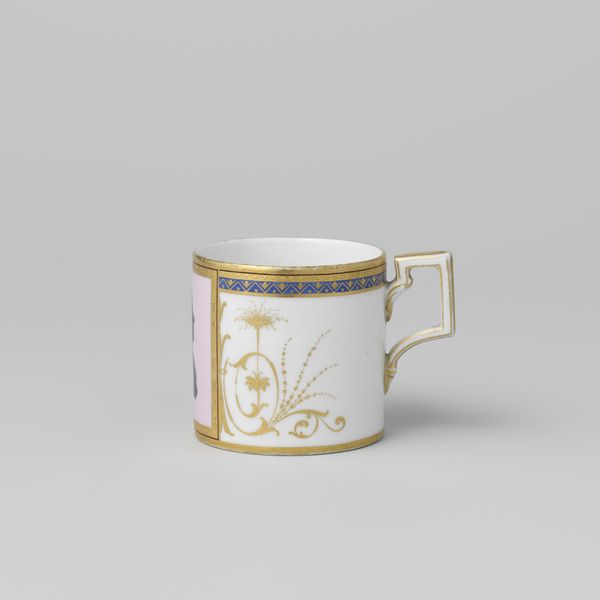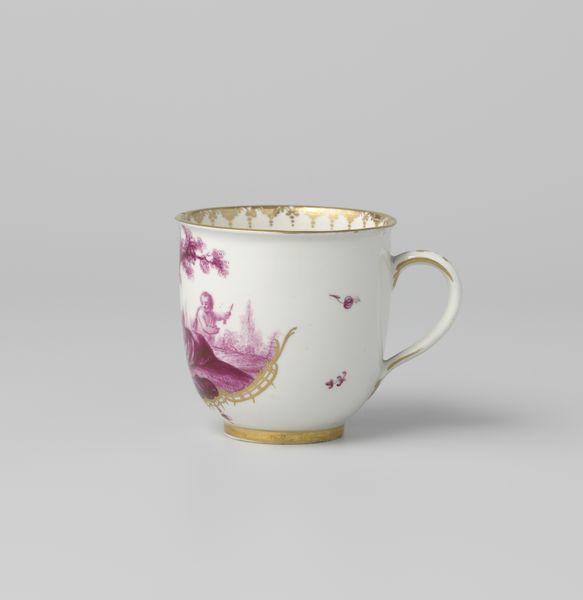
Dimensions: height 6.3 cm, diameter 7.2 cm
Copyright: Rijks Museum: Open Domain
This is a porcelain cup, likely made in Ansbach, Germany, though its precise date is unknown. It is decorated with a putto on clouds. The Ansbach factory, like other porcelain producers in 18th-century Europe, was deeply entwined with aristocratic patronage. These factories were often founded and supported by local rulers who sought to emulate the luxury and artistry of the Meissen porcelain works, which had royal connections to the court of Saxony. The imagery of putti, derived from classical art, was very popular at the time and was used to evoke themes of love, innocence, and divine favor, all of which were highly appreciated by the noble classes. It also reflects the secularization of religious art, where cherubic figures were repurposed for decorative and courtly use. Understanding the cultural context and the role of patronage helps us appreciate the cup not just as a beautiful object, but as a symbol of social aspirations and economic structures. Through archival research and study of similar objects, we can learn much more about the complex world in which such artworks were created and consumed.
Comments
No comments
Be the first to comment and join the conversation on the ultimate creative platform.
